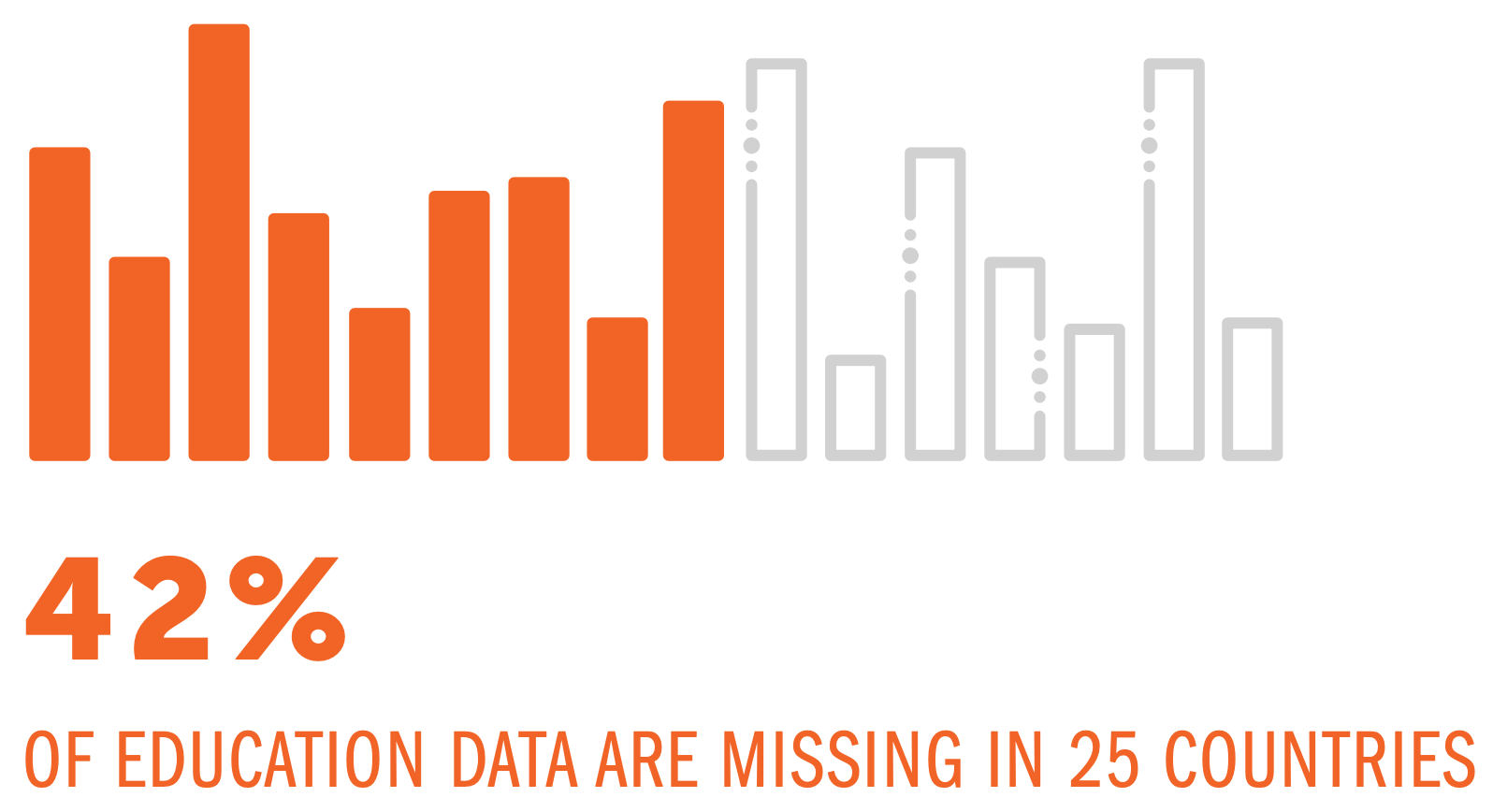
Strengthening Education Management Information Systems
Collecting reliable disaggregated data on school enrollment, participation, transition, and graduation is critical for evidence-based policymaking. However, an Open Data Watch and Data2X study of 25 countries shows that 42 percent of education data are missing. Given capacity constraints, ministries of education often rely on paper-based administrative data systems. Yet, paper-based tools are resource intensive and are a barrier to sourcing gender data and other statistics from administrative records. Education management information systems (EMIS) overcome the limitations of paper based data collection approaches.

Highlighting The Solutions
Using OpenEMIS for countries lacking an adequate EMIS
OpenEMIS is a potential replacement for outdated education systems that may be costly to update and a solution for countries that still lack electronic record keeping. Developed by UNESCO, OpenEMIS is a free, open source, customizable, and secure software. It allows ministries of education to collect data on student attendance, behavior and progress, teacher qualifications and attendance, and on institutional resources and services. It also has the capacity to monitor and analyze data on gender equality, especially indicators pertaining to students and staff composition, student performance, and access to sanitation.
Integrating menstrual health and hygiene questionnaires into EMIS
Education management information systems can also be used to address special needs of women and girls in schools, particularly for menstrual health and hygiene. Lack of sanitation facilities in schools pose barriers to gender-equal access to education, as the lack of these facilities can inhibit girls from attending or fully participating in school. Developed by UNICEF, the “Guidance for Monitoring Menstrual Health and Hygiene” provides methods to use EMIS to monitor menstrual health and hygiene in schools. The incorporation of sanitation questionnaires through EMIS allows policymakers and development practitioners to understand the linkages between female friendly sanitation facilities, accessibility of sanitary and menstrual products, and school enrollment and participation by girls.
Lack of sanitation facilities in schools can inhibit girls from attending or fully participating in school.
Other education solutions and findings
Out of 142 solutions found in the inventory, there are 19 education-relevant solutions, where ten of the solutions solely focus on education and nine solutions have an education component. Nearly 70 percent of the solutions address both data production and data use. Other education solutions in the inventory include:
- The development of a gender-equitable school index to understand inhibiting factors towards an equitable secondary school attainment
- The development of surveys to understand education and career decisions of girls and boys in secondary school
- The supplementary use of geospatial data to understand access to education services
- The role of open data in understanding education outcomes and government spending on education
What Will It Take to Scale Up Education Solutions?
Scaling up these solutions requires a multi-stakeholder effort.
Countries with weak or no education management information systems may require both capacity building and technical assistance from inter-governmental organizations such as UNESCO and UNICEF. Capacity building of the ministries of education will ensure that there is a designated team responsible for maintaining, updating, and producing data from EMIS. The payoff is an increased ability to monitor inclusive education progress and identify gender barriers to school participation and attainment. The successful implementation of EMIS also rests on a clear and established data collection process between schools and ministries of education.

How Will Applying These Solutions Impact Gender Data?
The solutions associated with education would help produce more gender data on school attendance, progress, retention, and access to menstrual hygiene facilities. In particular, the education solutions found in the inventory will close gaps in the data needed to monitor Sustainable Development Goal 4: Quality Education, including completing free, equitable, quality primary and secondary education (Target 1); ensuring quality technical, vocational, tertiary education (Target 3); increasing number of youth and adults with skills for employment (Target 4); achieving literacy and numeracy (Target 6); acquiring knowledge for sustainable development (Target 7); building and upgrading education facilities (Target a); and increasing education staff (Target c), all of which require sex-disaggregated data.
To access To access a full list of sources for the above, click here. To view the entire report, follow this link.
Close Gender Data Gaps
Explore more solutions that are practical and scalable across multiple development sectors.

